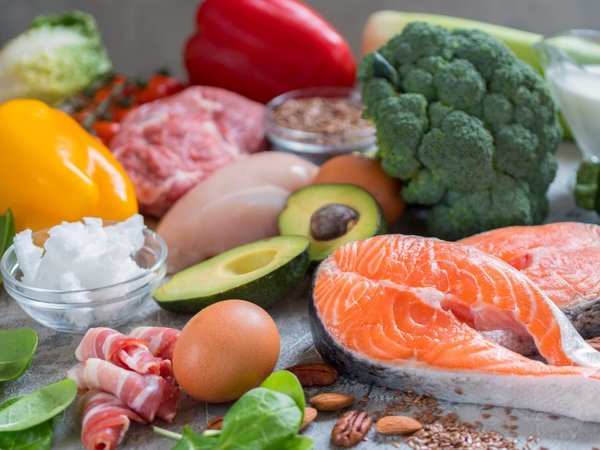 It was 2 o’clock on a Tuesday and I felt surprisingly awake. Attentive. Even productive.
It was 2 o’clock on a Tuesday and I felt surprisingly awake. Attentive. Even productive.
I love my job, but on a normal afternoon I find myself searching for distractions in the depths of my inbox and on Facebook.
That Tuesday in June was different. I knocked out one to-do list item after the next. I felt not just focused, but genuinely happy and relieved to be making so much progress.
It was the moment I realized how impactful the ketogenic diet can be.
The “keto” diet is experiencing a surge in popularity thanks to Silicon Valley tech workers who evangelize its ability to promote weight loss , boost energy, and possibly prolong life itself .
The low-carb, high-fat diet – which first became popular in the 1920s as a treatment for epilepsy and diabetes – limits carbohydrates to no more than 50 grams a day, which is the rough equivalent of a plain bagel or a cup of white rice. Dietary guidelines laid out by the US Department of Agriculture recommend between 225 and 325 grams of carbs a day.
Adherents of the keto diet fill up on healthy fats, like cheese, nuts, avocado, eggs, and butter, as well as leafy greens and animal protein. The body switches from burning carbs to burning fat as its primary fuel source – a process known as ketosis, which gives the diet its name.
Like the keto diet, the Atkins diet restricts carb consumption to 20 to 25 grams a day during an introductory phase, but then ramps up to 80 to 100 grams a day. So it’s less strict than keto.
For two months this past spring, I tried the keto diet to see why it’s so popular with techies . The first fews weeks challenged me more than Weight Watchers or the “Fed Up” diet ever had. I experienced regular headaches and painful urges to eat every sugary substance in sight.
But after being diligent for three weeks, I felt the difference. Even on days when I ate bunless cheeseburgers for lunch, my energy was sky-high. I drank less coffee and felt more alert. And because protein and fat send signals to the brain when you’ve had enough to eat, my snacking became less frequent and I was more focused on work as a result. I felt invincible.
When I lost 30 pounds on Weight Watchers in college, I celebrated the numbers on the scale and how my clothes fit. But because I continued to eat carbs in smaller portions, I was still prone to sugar crashes and afternoon “brain fog.” The transformation was incomplete.
The keto diet made over my mind and my body. The sense of mental clarity and energy that came on about one month into eating keto was unlike anything I’ve experienced. I woke up feeling strong, confident, and capable of taking on whatever the day threw at me.

Sadly, I’ve struggled to maintain the keto diet since challenging myself to make it two months.
The keto diet is beyond strict. Cheating with carb-heavy foods has the potential to reverse a state of ketosis and its pleasant side effects. After the dieter returns to keto eating, it takes an average of five days for the body to use up the carbohydrates stored as glycogen in the body.
Eating at restaurants was the hardest part. I ate taco fillings out of tortillas and scraped the breading off fried chicken. Every menu had just one or two things I could order guilt-free.
I want to return to the keto diet. I hope to find the willpower in a plate of bacon.
[Source:-businessinsider]
